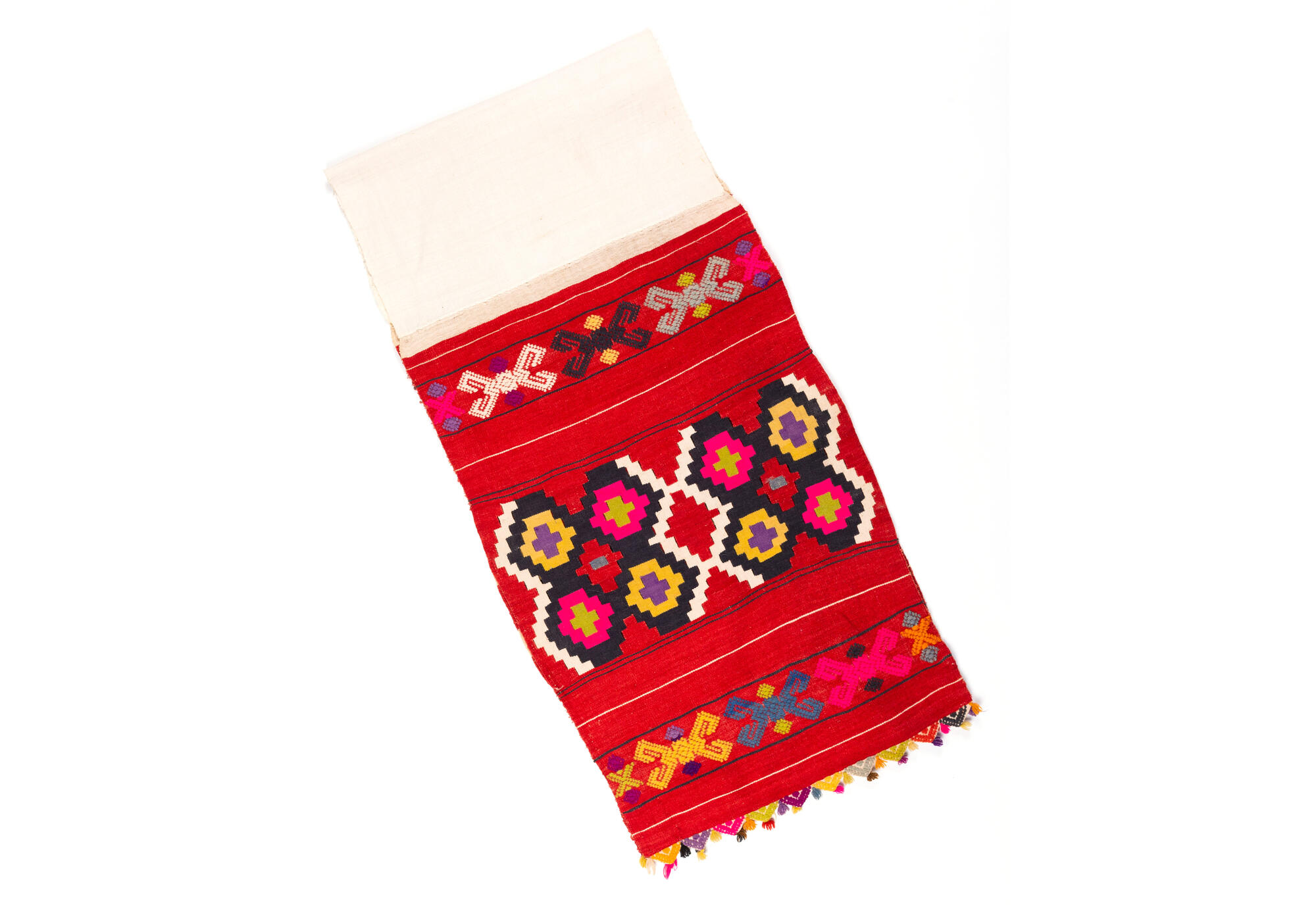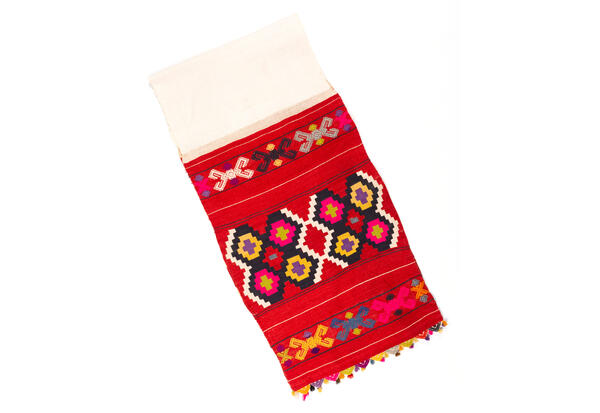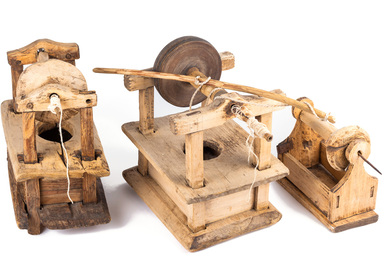Hand-woven items are an essential part of any national culture and everyday life, and are closely related to a people’s history, lifestyle, aesthetic views, and religious beliefs. Bashkir woven items are marked by tremendous diversity. The Bashkir people weaved tablecloths, bedspreads, prayer rugs, carpets, ornate curtains called sharshau, patterned cloth sections to produce festive clothing, and many other products. The collection at the Ethnography Hall contains a terrific example of traditional Bashkir weaving: a towel made at the beginning of the 20th century.
Due to the peculiarities of how households used the towel, its middle wore out faster, therefore, mostly only its ends were decorated (also called endpieces). A white towel was usually capped off with ceremonial red endpieces — a towel with these ends is also displayed in the museum. As the base part of the towel wears down, the ends are stripped off and sewn onto another white cloth section. There were also towels with decorated endpieces that were not reused.
The everyday Bashkir refectory towel (called a tastimal) looked rather modest: the red field was crossed by narrow white lines, and between those ran stripes with a checkerboard red-and-white pattern. These towels resembled a braid with honeycomb or hardanger embroidery. Less often, a contour pattern with three stripes stood out. On festive and ceremonial towels, ornaments were made from zigzags with inscribed corners, or from a succession of corners, broken lines, and connected compositions with rhombuses. Bashkir ornamentation is always symmetrical: the patterns are arranged either with a border, or with separate rosettes, or in a continuous grid. In addition, all these techniques could be used simultaneously.
The endpieces of holiday towels were usually decorated with three rows of patterns. The central field was brightly and colorfully decorated with larger elements, and the upper and lower ones with smaller ones that mirrored each other. The simplest elements in the ornamentation of the embedded weaving on the towel endpieces are stepped lines. Tangling and connecting with each other, they form x-shaped, c-shaped, and diamond-shaped figures in the form of a figure eight and other, more complex patterns.
In addition, Bashkir ornamentation is characterized by an eight-pointed star, a cross, a rhombus with elongated sides, or with paired whorls at the corners, and horn-shaped figures. Embedded patterns are made on the red background of the fabric, and their coloring is dominated by yellow, white, and green, which alternate in terms of contrast. Elegant towels were considered valuable gifts, and were often used to decorate the home.
Due to the peculiarities of how households used the towel, its middle wore out faster, therefore, mostly only its ends were decorated (also called endpieces). A white towel was usually capped off with ceremonial red endpieces — a towel with these ends is also displayed in the museum. As the base part of the towel wears down, the ends are stripped off and sewn onto another white cloth section. There were also towels with decorated endpieces that were not reused.
The everyday Bashkir refectory towel (called a tastimal) looked rather modest: the red field was crossed by narrow white lines, and between those ran stripes with a checkerboard red-and-white pattern. These towels resembled a braid with honeycomb or hardanger embroidery. Less often, a contour pattern with three stripes stood out. On festive and ceremonial towels, ornaments were made from zigzags with inscribed corners, or from a succession of corners, broken lines, and connected compositions with rhombuses. Bashkir ornamentation is always symmetrical: the patterns are arranged either with a border, or with separate rosettes, or in a continuous grid. In addition, all these techniques could be used simultaneously.
The endpieces of holiday towels were usually decorated with three rows of patterns. The central field was brightly and colorfully decorated with larger elements, and the upper and lower ones with smaller ones that mirrored each other. The simplest elements in the ornamentation of the embedded weaving on the towel endpieces are stepped lines. Tangling and connecting with each other, they form x-shaped, c-shaped, and diamond-shaped figures in the form of a figure eight and other, more complex patterns.
In addition, Bashkir ornamentation is characterized by an eight-pointed star, a cross, a rhombus with elongated sides, or with paired whorls at the corners, and horn-shaped figures. Embedded patterns are made on the red background of the fabric, and their coloring is dominated by yellow, white, and green, which alternate in terms of contrast. Elegant towels were considered valuable gifts, and were often used to decorate the home.



